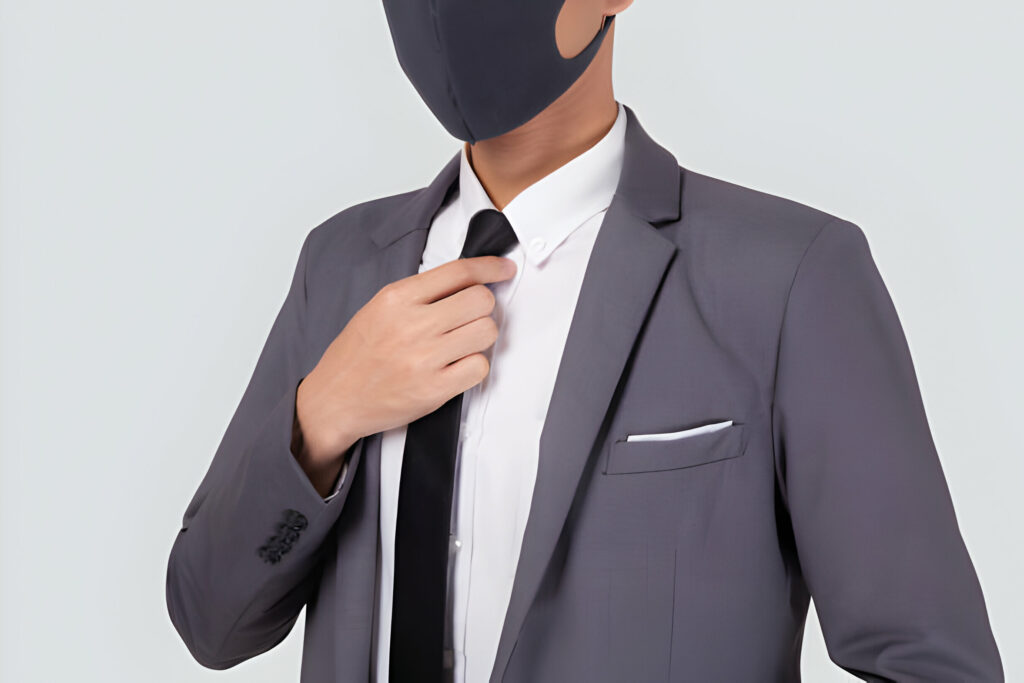

How to Tie a Face Mask Properly?
Ensuring a headband mask works well starts with the right way to tie it to your head. Follow these steps for a secure and snug fit:
Position the Mask
Put the face mask that ties behind the head with its outside part facing out. Make sure any parts that can be moved, like a wire for your nose, are in their proper place.
Locate the Ties
Find the links connecting to the mask’s top and bottom corners. Moreover, these long straps are made to hold the mask on your head.
Place Over Nose and Mouth
Put the face mask that ties behind the head over your nose and mouth, ensuring it covers everything. Similarly, the top part should sit nicely on the middle of your nose, while the bottom bit goes under your chin.
Cross and Tie
Fix the ties at your head and bring them to the front. Furthermore, tie a firm knot or bow, making it tight but comfortable. The tying process needs to be fast but not too much.
Adjust for Comfort
Please wear the face masks that tie behind the head and move it around for the best comfort and full coverage. Make sure the top part of your mask fits nicely on your nose and the bottom part covers you under your chin correctly.
Perform a Seal Check
Check if the mask’s edge seal is correct; fix it to make it work better.
What is the Purpose of these Face Masks?
Enhanced Comfort
When ear loops are absent, they make the ears feel less sore and pressured. Moreover, this is great because you can wear them for a long without much discomfort.
Customizable Fit
Ties let people adjust the fit to match their face shape. In addition, this makes sure a strong seal is used so not much air escapes. This flexibility fits many different types of face shapes and sizes.
Reduced Ear Strain
People often have ear pain or itching feel better using masks that fasten at the back of their heads. This function is essential for people who work in jobs where they have to wear masks all the time.
Stability During Movement
The safe fastener keeps the mask on, even during sports or movements. Hence, this means we don’t need to fix it often.
How Are Face Masks that Tie Behind the Head Different Than Normal Masks?
Firstly, the most significant difference is in how they are tied together. Standard masks use ear loops, but those that link behind the head have long straps to keep them securely fastened.
Secondly, face masks that tie behind the head instead of using ear loops are more comfortable and better for long-term use.
In addition, ties give a fit that can be changed, fitting to different face shapes and sizes. This feature makes a tight seal, increasing how well it works.
Lastly, the fastening part helps keep the mask steady, making it less likely to move or slip when you move.
About Us
A2 Sustainable Supplies is a minority-owned business focused on keeping life sustainable by providing goods and services to improve the living environment. Our list of medical and non-medical products is extensive and our ability to provide the products at a reasonable and competitive price is key.ttis, pulvinar dapibus leo.



